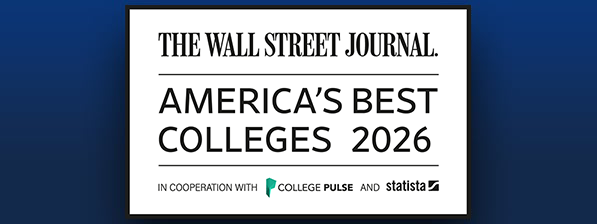
You’ve got the content down. Now you just need to edit your paper. You’ll need to look at grammar and punctuation. You’ll need to make sure your spelling is accurate and your paragraphs are structured well. And, you’ll also need to check the APA format.
Ensuring your paper follows APA Style may seem like a small requirement. But really, it’s vital. Just like a boss or client may request a certain format for a proposal or report, circles in higher education require the use of APA Style.
There’s a lot to know about APA Style—the right paper sections, correct formatting of in-text citations and using proper punctuation.
You may not always get it perfect. But we can learn from our mistakes.
Here are five common mistakes students make with APA Style and easy ways you can fix them.
1. Incorrect Header
The first words in a paper with a title page is the running header. It’s a simple first step but it also often gets ignored. According to a study conducted by the Journal of European Psychology Students (JEPS) in 2013, 86% of all papers reviewed either did not contain a running head or the running head was improperly formatted.
That’s a lot of missing first lines.
You may wonder what the big deal is if the full title is listed on the title page anyway. But like a resume gives the employer a first impression of you, so your title page gives a first impression of your paper as well.
The running head should include a shortened version of your full title justified left, page numbers justified to the right and in 12 point font Times New Roman. Also, on the title page ONLY, include the label, “Running head.”
You may even want to set up the headers of your paper before you begin writing the actual content. That way, you won’t forget or neglect to include that important running head.
2. Errors in In-Text Citations
You’ve spent hours researching and reading information to include in your paper. Now, it’s time to give credit where credit is due. In-text citations are a common trouble area for many students. In fact, JEPS found that 84% of all papers reviewed during their study contained problems with in-text citations.
APA Style requires the use of the author’s last name and the year of publication in an in-text citation. If you’re including a quote, page numbers from the original work are included as well.
If you include the author’s name in the sentence, put the year right after, as in:
Smith (2017) reported higher reading scores with the first group of students.
If you don’t, put both the author’s name and year at the end of the sentence, as in:
The first group of students had higher reading scores (Smith, 2017).
Here are some other important guidelines to remember about in-text citations:
- All sources used in in-text citations must also be included in the reference page at the end of the paper.
- When citing multiple sources in a single sentence, place last names in alphabetical order.
- If there’s no author found, use a shortened version of the title instead.
- If there’s no date found, use “n.d.”
3. In-Text Citations Don’t Match the Reference List
You may have mastered the in-text citation but you’ll also need to include those sources in a reference list. Sometimes, students forget to mention an in-text citation source in the reference list; or the source in the reference list can’t be found in the paper.
Unlike some other style guides, APA Style does not require the reference list to include consulting sources. If a source is cited in the paper, it’s in the reference list; and if it’s in the reference list, it’s cited in the paper.
An easy way to fix this error is to compare all the in-text sources with those found on the reference list. Ensure they all have a match and that the author name and year are consistent.
4. Incorrect Quotations
When directly quoting or paraphrasing from an original source, you’ll need to include the page number.
But so many online resources, what if there is no page number listed for the source? Here are some options to use instead:
- Paragraph number.
- Overarching heading plus paragraph number.
- Abbreviated heading in quotes and paragraph number.
Adding direct quotations or paraphrases from quality sources add value and credibility to your paper. Keep the credibility by citing sources well.
5. Citing with Multiple Sources
You know you need the author’s last name and publication year for an in-text citation. But what do you do if there’s more than one author?
Not properly citing a single source with multiple sources is another common error students make in APA Style. Sometimes, students don’t include both names, or they forget the comma or they put the year in the wrong place. Here’s your easy fix:
Two Authors
- In the sentence, name both authors in the signal phrase, using “and” between the name; end with the year: Reports by Smith and Doe (2017) states….
- In the parentheses at the end of the sentence, use last names separated by “&“; end with a comma and the year: …the report stated (Smith & Doe, 2017).
Three to Five Authors
- In the first reference, list all the authors, either in the signal phrase or parentheses. If in parentheses, use commas up until the last two names, where you’ll add “&” and end with a comma and the year: (Smith, Doe, Berry & Lee, 2017).
- In subsequent references, use only the first author’s last name, followed by “et al.” (Smith et al., 2017).
Six or More Authors
Sometimes, works have a lot of authors. In these cases, use the first author’s last name, followed by “et al.” (Smith et al., 2017).
Be supported as you pursue your goals
Maintaining APA Style in your paper may seem like just an extra step to complete. But cohesion in style enhances the presentation and cohesion of your paper. It ensures all sources are given credit for their work. The consistent guidelines help you be able to check off what elements you have and what you may still be missing or will need to fix.
And when your supervisor asks for a sales report with a particular format, you’ll know just how to follow it.
Cornerstone University offers numerous academic support resources to equip you to succeed in your degree program, whether that’s in writing a paper or other assignments.







